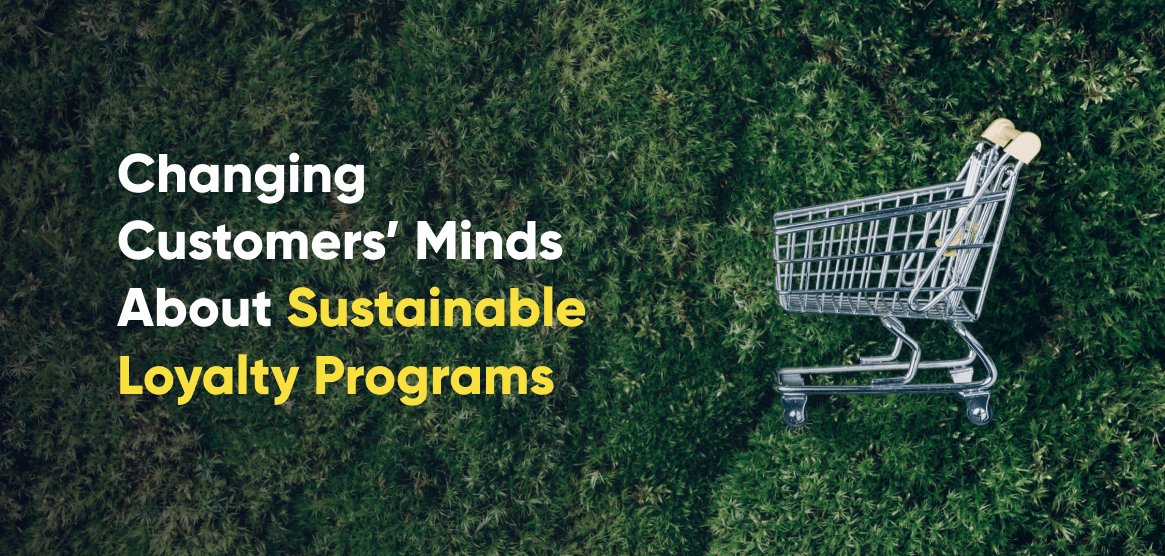Although sustainability has become mainstream and new, sustainable products are entering the market at a rapid pace. The truth is that they are failing to gain traction and scale in the market. While customers seem to support the idea of doing the right thing, sales on the ground tell a very different story. With sustainable loyalty programs, retailers have a tool to incentivize customers to act on their beliefs.
Underlining The Message Through Trust and Loyalty
In the fashion and lifestyle sectors, we are witnessing a wave of companies taking action and integrating sustainability into their operations. Yulan Sustainability’s approach is to work together with brands to help their board and founders define their brand values, ethos, and mission. Strong foundations and authenticity are crucial to maintaining credibility and achieving growth. Brands that are already experts at communicating their goals and commitment are clear leaders. Companies like Patagonia, The Body Shop, and TOMS are using sustainable loyalty programs to better highlight their value proposition, shape customers’ relationships with eco-friendliness, and reward their members for making sustainable choices.
These market leaders make it clear which United Nations Sustainability Goals (UNSDG) they focus on and gain loyalty from customers who align with their values. This simple message is easier to share. However, in a time of digital overload, the challenge for brands is to get their fans to share that message with a wider audience.
Purpose First – Where Companies Need to Put Their Focus
Firstly, companies need to focus on building strong foundations and authenticity, communicating their goals and commitments, and using loyalty programs as a platform to find and support brand advocates to provide positive word-of-mouth. By doing so, they can change consumers’ minds and help promote sustainable loyalty programs on a larger scale.
Adopting responsible behavior and purchasing ethical products are the two most popular actions that current and future loyalty program owners want to reward: 50.8% of companies plan to reward responsible behaviors, while 51.6% plan to reward the purchase of ethical products. Nevertheless, surveys clearly show that despite the desire to make responsible choices, consumers are not following through with purchasing eco-friendly products. However, if they receive encouragement from a friend they trust, this could change.
The Perception Pivot – The Key Challenges
Recent research reveals that consumers perceive sustainable and environmentally friendly products to be less effective and often more expensive than their conventional counterparts. For instance, a survey conducted in the USA among 253 American consumers evaluated two ads for laundry detergent — one labeled as eco-friendly and the other not — both claiming to have the same cleaning results. The majority of consumers chose the traditional product, perceiving sustainability as a sign of lower effectiveness. According to The Fast Company, “consumers seem to have rigid categories in their minds when it comes to products.”
Changing this perception poses a significant challenge for product-based companies that were not originally established as sustainable brands. Here are three key challenges they face:
- Customers are spoilt for choice
Since the 1850s and the Industrial Revolution, companies have been striving to manufacture products at high speed, fine-tune the process, increase margins, and build successful businesses. We have become accustomed to cheap and highly refined products. This era of industry has lifted many countries out of poverty, but it has also caused the global depletion of natural resources and untold damage to the environment. Companies are now trying to make more sustainable products, but creating an exact replacement of a highly industrialized best-selling product is a massive challenge. It affects every part of the supply chain, and the outcome may take years to perfect.
- Humans are creatures of habit
By nature, humans are creatures of habit. Since the pandemic, our daily routines have been changed beyond recognition. We no longer commute to the office daily with a flat white and lunch at the local sandwich shop. We have formed new routines around our shopping, recycling, and disposal of packaging. We have changed what we eat, buy, and wear, forming new daily habits to replace the old, with the majority being on devices. Once we form a habit, we find it hard to change.
- Our decisions are influenced by others
Surveys have shown that people make very different sustainability choices when in private compared to when they are in the company of others. A Harvard Business Review article cited research where customers were asked to choose between an eco-friendly granola bar (“Good for you and the environment”) or a traditional product. The sustainable option was twice as likely to be chosen when others were present than when the choice was made in private.
Changing people’s minds about sustainability and eco-friendly products is complex. So, how can companies do better… and harness the power of loyalty programs to help them with these hurdles? Aligning a brand’s purpose with its sustainable strategy is the first step in establishing an authentic brand message. Patagonia, Toms, and The Body Shop are examples of brands that have successfully achieved this alignment.
How to Change Customers’ Minds
To change customers’ minds, brands can start with these four steps:
- Educate customers and bring them on the brand journey
For example, a fashion brand that replaces a best-selling fabric with a more sustainable version faces many challenges that impact the entire production process. For instance, It could require the machinery to be completely recalibrated, making the process slower. The raw yarns may require higher minimum orders or be less available. Communicating the reasons for these changes and the investment required helps customers understand the brand’s commitment to sustainability. In a sustainability-focused loyalty program companies can reward their members for watching videos that explain the brand’s commitment or the reasons behind the changes.
- Understand the psychology of habits and use it to encourage sustainable behaviors
Breaking bad habits and encouraging good ones requires making the sustainable option very visible, very easy, or the default. Brands can also use messages, reminders, feedback, and rewards to reinforce positive actions. Changing behavior is a major strength of loyalty programs. Using badges or challenges that reward members for repeatedly performing sustainability-focused actions (bringing back or donating old clothes) is a great way to do so.
- Make sustainability a group commitment
The book titled The Fashion Switch talks in length about treating every customer as a brand ambassador. By nurturing them and rewarding positive actions, brands can spread the message of sustainability and encourage others to make changes. Creating a community-driven approach to sustainability helps customers feel accountable, uplifted, and a part of the cause. Loyalty programs can help build a like-minded community, or foster a group mentality. For example, members might receive access to exclusive content, early access to new product sales, or invitations to members-only events — which are great ways to find brand advocates, too.
- Build trust
Earning the trust of customers who are skeptical of sustainable products and reward programs may take time. However, if more brands embed sustainability in their values and communicate it clearly, the message will eventually cut through. In today’s world of omnichannel retail marketing, analyzing customer data is essential for building brand trust and engaging customers. By gaining their trust, brands can bridge the “intention-action gap.” Sustainable loyalty programs can be the perfect vehicle for bringing customers along in the brand journey by rewarding the formation of new habits and spreading the word about the benefits of taking action. Social media contests, incentivized product reviews, and friend referrals are all loyalty program features that can help.
Sustainable Loyalty Programs to the Rescue
Implementing a sustainable loyalty program not only helps reduce the company’s environmental impact, but it also engages customers by providing them with opportunities to take action on “green issues”. This involvement can strengthen the bond between the customer and the company, leading to increased loyalty. A sustainable loyalty program is seen as socially responsible and environmentally conscious, therefore it improves the company’s brand reputation, attracts new customers, and helps retain existing members who value these qualities.
Discover more about incorporating sustainability, recycling, and charity into a green loyalty program to align brand values with those of your customers. Simply strike up a conversation with our team to discover how our technology can empower the launch or renewal of your loyalty program. Book a demo with our experts or send us an RFP.
In the meantime, make sure to download our concept-building worksheet — it is a valuable tool when it comes to brainstorming your loyalty program’s concept.

